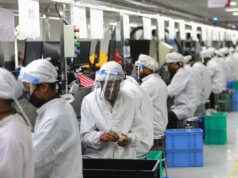 Central Electricity Authority has put it on the non-availability of funds and poor financial condition of State Electricity Board (SEBs) as main reasons of shortfall in achieving the life extension and renovation and modernisation targets.
Central Electricity Authority has put it on the non-availability of funds and poor financial condition of State Electricity Board (SEBs) as main reasons of shortfall in achieving the life extension and renovation and modernisation targets.
In a note on R&M of thermal power stations, CEA also stated that non-availability of dedicated R&M team with most of the SEBs is another major reasons for the shortfall. Further, in power deficit scenario utilities hesitate to take longer shut down for undertaking life extension works. Delay in supplies of equipment by the equipment manufacturer, lack of co-ordination between the contractor and sub-contractors, shortage of balance of plants suppliers and delay in finalization of R&M contract are some of the other issues laid down by the CEA that is causing shortfall in achievement of R&M targets.
R&M is seen as a cost-effective option for additional generation from the existing thermal power stations and better asset management. The Centre launched R&M Programme for thermal power stations in September 1984 for completion during the seventh Plan period. In the subsequent 8th and 9th Plans, R&M and LE works were carried out on a number of older generating units which resulted in improvement in their performance as well as extension of their useful life by about 15 to 20 years particularly in case of LE works.
The main objective of R&M of thermal generating units is to make the operating units well equipped with modified latest technology equipment and systems with a view to improving their performance in terms of output, reliability and availability, reduction in maintenance requirements, ease of maintenance and minimizing inefficiencies.
A total of 16146 MW of capacity addition were achieved through R&M and LE in 11th Plan. In the 12th Plan period, 29367 MW of LE and R&M works have been planned. CEA is the nodal agency in the implementation of R&M and LE schemes in the country by providing technical support to various power utilities for taking up R&M works.










